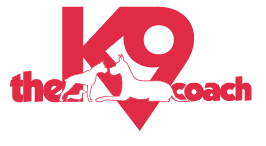How To Wean Off Treat Rewards
I am not working for free? Do you? Even if you volunteer, there is some level of reward and satisfaction in your work and the joy it gives you or others.
Your dog isn’t working for free, either. But we don’t have to use treats for everything, forever.
Unfortunately, too many of you have taught your of to do tricks and not obedience and they are expecting immediate payouts vs a payday at the end.
Too many of you want to stop paying your dog too early. And many of you will forget it’s payday at all and not have any payment on you in practice situations, when the doorbell rings or your first outings. Get a treat pouch you’re going to need it for a long while. Suggested Treat Pouch: https://amzn.to/3zzbxy2
Variable Reward Dog Training
When training your dog with food, you want to move to variable reward dog training or variable delivery. So what does that mean?
Teaching Phase: 1:1 (1 command = kibble payment)
When you're working on something new with your dog, you want to give 1 piece of kibble*. The food is the payoff for working/learning.
At this stage of learning, you will even pay your dog for effort and attempt to try something new.
1:1 delivery is especially important when teaching and reinforcing your recall (Come) command.
Connecting the Dots Phase:
In this phase, you want to be sure you are not given treats for incomplete or somewhat inaccurate skills. Example, if you ask your dog to sit, and he also gives you a paw, you will not reward. If he stands up or jumps up to take the treat from you, you will not reward. He must keep 4 on the floor, heiny on the ground to receive the reward & praise.
This means, when you request a co
Learning Phase: 1:2 or 1:3
As your dog demonstrates that he clearly understands the command, how to deliver the command and performs it accurately about 85-90% of the time, you want to begin varying the delivery of the reward.
mmand and the dog performs it, a kibble may or may not show up. You might deliver reward every other time, or every 3rd time. To be clear - even this varies. Meaning you alternate 1:1, 1:2, 1:3 in varying order.
Mastery Phase: 1: Random & Jackpots
As your dog has learned multiple skills, you will begin chaining them together. Meaning, you ask for a sit, have him stay as you move away, ask for a distance down, and then recall the dog to you. At the end of any series of skills you will give a reward -- maybe even a jackpot if it was done exceptionally well. Jackpot simply means multiple kibble instead of just one. Or maybe some special yumminess shows up as a surprise.
During a series of commands, or even practicing multiple repetitions of the same command, you could easily reward your dog with random delivery of food and random jackpots just to keep him motivated.
Other Points to Consider:
Don't ever move to complete zero pay! You wouldn't work for free would you?
Build a reliable recall and reward this one well and often! See the content on Recall Games.
It has been proven, that dogs learn to anticipate the delivery of reward. When you pair the delivery of food with a marker like "Good" or "Yes" -- it's still rewarding to the dog! If no kibble shows up, he will work harder to earn it next time. See our article on reward markers
*We prefer single ingredient treats like beef liver for training treats. If you’re a kibble feeder and worried about added calories, try using your dogs dinner for treats — you can dress it up with a little sprinkle of Parmesan cheese or garlic power. If we are working to overcome a behavioral problem like fear of strangers/kids or significant reactivity, we might tell you to rain down chicken from the sky. But in those situations it's high value, lots of it and less about variable rewards. That's a topic for another day.....
Order your Treats from Volhard! See my linktree https://linktr.ee/k9coach
